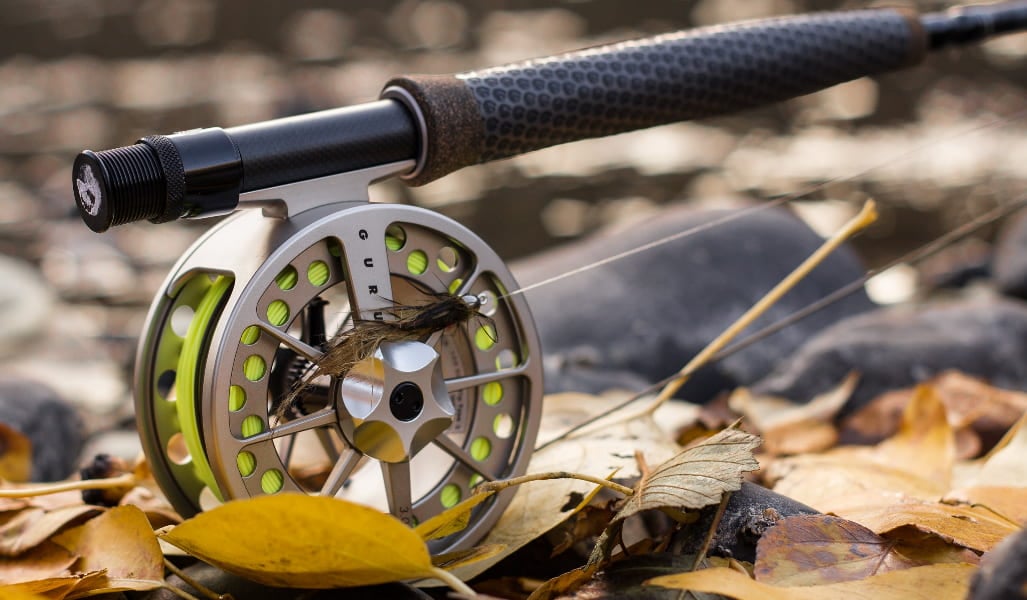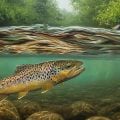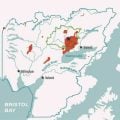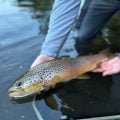Ask MidCurrent: Year-End Game Plan for Trout in the Northeast

Image by Erik Hanson
Question: I’d like to extend my fishing into the colder months. What are some good trout fishing tactics from October through December for the Northeast region of the U.S.?
Answer: Before getting into specific tactics, it’s a good idea to check each state’s trout fishing regulations. Season dates can vary significantly by state, and even by specific waters within states. These regulations can also change from year to year, so make sure your info is current and from official sources before planning any fishing trip.
The fall-to-winter transition can offer some of the most rewarding trout fishing of the year in eastern North America. The crisp air, colorful leaves, and promise of hungry trout chasing the tail end of summer’s smorgasbord then shifting to survive through more austere times make these months special for anglers. But you’ve got to understand how trout behavior changes with cooling temperatures.
October: The Golden Month
October often stands as the crown jewel of the fishing calendar. The trees are in full color and trout seem to sense that leaner times are coming, feeding aggressively.
As water temperatures drop, trout become more territorial. Large, articulated streamers in olive, black, or white can yield heart-stopping strikes, especially from big browns. Focus on deep pools and undercut banks, particularly during low light conditions.
With spawning underway, egg patterns become increasingly effective. Drift them through likely holding areas below spawning redds. Ethical considerations are crucial here—tread lightly and avoid disturbing spawning fish to help preserve the fishery.
The October Caddis hatch can bring even the wariest trout to the surface. Size 8-12 imitations in both dry and pupa forms are essential. Late afternoons near overhanging vegetation often produce memorable takes.
As larger insect activity declines, smaller flies become the focus. Downsizing to BWOs (sizes 18-24) and midges (sizes 20-26) can turn slow days into successful outings. Don’t overlook these tiny but important food sources.
November: Adapting to Change
November is a month of transition. The last leaves fall, and there’s often a hint of winter in the air. It’s a time that rewards the flexible angler.
As surface activity declines, nymphing becomes increasingly effective. Euro-nymphing techniques with heavy flies like Perdigons, Frenchies, and stonefly nymphs can be deadly in pocket water and runs. It’s not glamorous, but it puts fish in the net.
While larger streamers can still produce, smaller patterns like Woolly Buggers and Slumpbusters in sizes 8-12 often find more success. The key is to fish them slow and deep. Sometimes, a subtle twitch is all it takes to entice a strike.
Anglers should keep an eye out for late-season Blue-Winged Olive hatches, especially on overcast days. Dreary November afternoons can produce fantastic dry fly fishing when most anglers have already packed it in for the season.
As the month progresses, areas downstream of spawning grounds become prime targets. Brown trout recovering after the spawn are often hungry and willing to take larger offerings. It’s a great time to catch a trophy, but keep in mind that these fish are exhausted and should be handled with extra care.
December: Embracing Winter
December fishing isn’t for the faint of heart, but it can be incredibly rewarding. The crowds thin out, and rivers often feel like private sanctuaries.
Tailwaters become prime destinations in December. More consistent temperatures often keep these waters ice-free and fish active. It’s an excellent time to hone nymphing skills.
Trout metabolism slows in cold water, necessitating adjusted tactics. Focusing on slow, deep pools with small nymphs and midges often yields results. A strike indicator can help detect subtle takes, which are often little more than a slight hesitation in the drift.
In many eastern waters, midges become the primary food source. Carrying a variety of midge patterns in larva, pupa, and adult forms is a great idea. Mastering these tiny flies can be the difference between a slow day and a memorable one.
Winter stoneflies shouldn’t be overlooked. Small black stonefly nymphs can be effective, especially in freestone streams, offering a nice change of pace from the usual winter fare.
Concentrating efforts on the warmest part of the day, typically between 11 in the morning and into early afternoon, can make a significant difference. Even a few degrees can increase trout activity noticeably.
Anglers should remember that cold water makes trout lethargic, so playing them quickly to avoid exhaustion should always be the goal. Extra care when releasing fish in frigid temperatures goes a long way in ensuring the health of the population.
As the seasons transition from fall to winter, staying attuned to changing conditions is vital. Water levels can fluctuate with fall rains and early snow melt. Always check local regulations, as some waters may have seasonal closures to protect spawning fish.
There’s a unique satisfaction in fooling a trout when the world is cold and quiet. Layering up, grabbing a rod, and hitting the water can lead to rewarding experiences.











